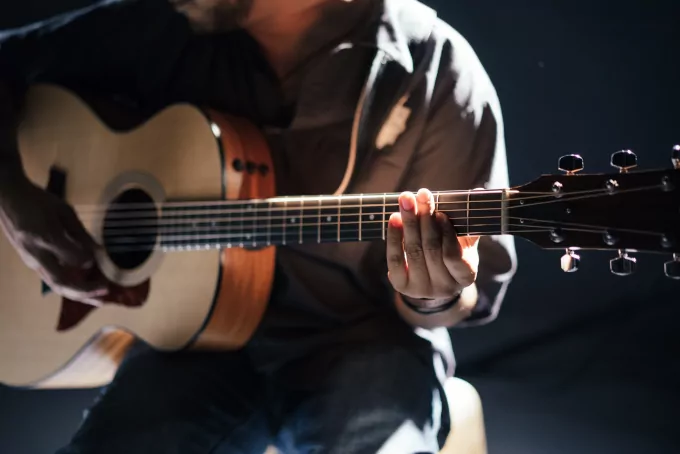The limelight is often shined on lead guitarists and their dazzling solos when it comes to playing the guitar, but the beauty of a well-rounded musical performance resides in the hands of those who offer the harmonic foundation and rhythmic thrust. This is known as “comping,” and it is a skill that every guitarist should learn. Comping, an abbreviation for “accompanying,” is the process of constructing elaborate chord progressions, rhythm patterns, and harmonic support to improve the song being played.
We will delve into the world of guitar comping, investigating its relevance, approaches, and how to hone this ability to become a versatile and valuable artist.
Comping is the foundation of any musical ensemble, from jazz to rock to everything in between. While lead guitarists may steal the show with their solos, it is the comping guitarist’s responsibility to give the framework for the lead to shine. Comping produces a lush harmonic environment that serves as a foundation for melody, rhythm, and overall musical expression. It tightens the groove, sets the mood, and adds depth to the music.
Learn to Play the Guitar
Comping Techniques
Chord Knowledge and Voicings: Comping requires a solid understanding of chords and their numerous voicings. Experiment with various chord shapes and inversions to produce intriguing harmonies that complement the melody and other instruments.
Variations in beat: Playing the same chord progression in the same beat might become tiresome. To add dynamic interest to your comping, experiment with rhythmic variations. Syncopations, staccato notes, and strumming patterns can all be used to improve the rhythm.
Voice Leading is the process of gracefully transitioning between chords while moving as few notes as feasible. This promotes a smooth flow in the harmonic progression, avoiding huge jumps that may appear disconnected.
Dynamics: Dynamics, like every other part of music, are important in comping. Varying your strumming or plucking strength can bring passion and depth to your accompaniment.
Listening and Reacting: Comping effectively necessitates active listening to the other musicians. Depending on the overall musical environment, adjust your chords, rhythms, and dynamics. Interaction with other musicians is particularly vital in genres such as jazz, where improvisation is essential.
Practicing Your Comping Techniques
Listen to recordings of your favorite guitarists and take note of their comping skills. Examine how they interact with the other instruments, as well as the chord progressions and dynamics they employ.
Practice with Backing Tracks: Use background tracks to practice comping in various styles. This will aid in the development of your rhythmic sense, chord transitions, and ability to fit into a variety of musical contexts.
Play with Others: One of the finest methods to develop your comping talents is to jam with other musicians. It tests your ability to listen, adapt, and collaborate in real-time. This event will help you enhance your musical intuition.
Transcribe Comping Patterns: Transcribing comping patterns from recordings can provide insight into skilled musicians’ thought processes and tactics. This analytical technique can help you expand your vocabulary of comping concepts.
Experiment with Various Genres: Comping is not restricted to a single genre. Experiment with comping in jazz, blues, rock, funk, and other styles to broaden your guitarist’s versatility and adaptability.
Comping is an essential skill that any guitarist should learn. It is the unifying force that connects melodies, rhythms, and harmonies, improving the whole musical experience. You can become a competent comping guitarist who contributes considerably to the magic of live performances and recordings by increasing your understanding of chords, rhythm, dynamics, and interaction with other musicians. So, whether you’re strumming chords in a small acoustic setting or providing depth to a screaming electric ensemble, keep in mind that your position as a comping guitarist is critical to the music’s heartbeat.
Photo by Gabriel Gurrola on Unsplash

